#pwnishe
Explore tagged Tumblr posts
Text
Blog 4: Environment Design Development 1 – Continuation of Place of Mind
Vegetation and Lighting Challenges
Adding vegetation and lighting put some energies into the scene but was not easy to do much due to constraints in the hardware.
Process
Vegetation Using Geometry Nodes: By following a YouTube video tutorial I learned how to use Geometry Nodes to place grass, trees, and stones on the terrain within a short amount of time. This relieved pressure from my PC but also was generally quality.
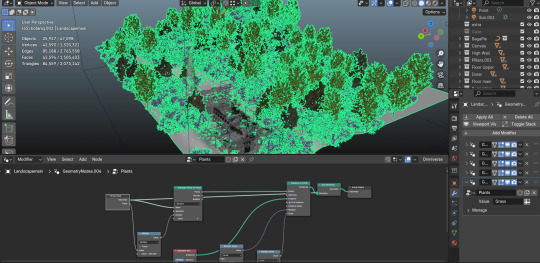
Setting Up Lighting: For exterior outputs I chose natural light accompanied with volumetrics and for interior scenes medieval torches. They also helped to improve the lighting in those setups in order to set the mood of the scene.
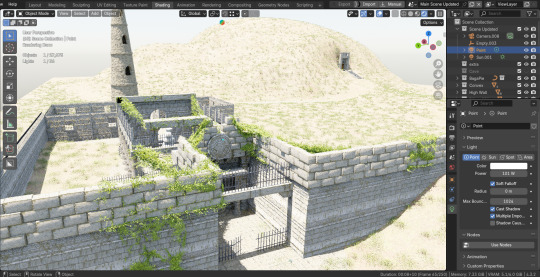
This phase helped me understand the role of vegetation for low-performance systems and how the lighting affects the narrative of a 3D space.
References
Blender Foundation. (2024). Blender 3D Software. [Online]. Available at: https://www.blender.org [ 27 December 2024]
YouTube. (2024). Geometry Nodes Vegetation Tutorial. [Online]. Available at: https://www.youtube.com/watch?v=SbKQEwGSS2M&ab_channel=Bro3D [ 27 December 2024]
#Developing skills#Development1#3d model#beingmughal#art#blender 3d#artwork#blender render#being#mughal#hamxa#game#game design#hertfordshire#video games#learning games#study blog#design#digital art#Youtube#3d#pureref#environment art#competition#pwnishe#Trim Sheet#modular
0 notes
Text
Blog 5: Environment Design Development 1 – Continuation of Place of Mind
Rendering the Final Scene:
The final scene was given the last touch for this project. There was also limited hardware which I had to work around but I was able to get the output that was required by constant trials.
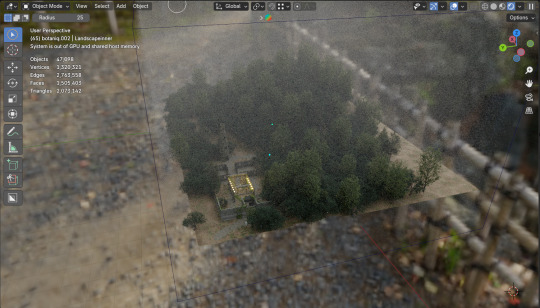
Process
Challenges with High-Poly Models: With the current scene, the rendering was slow because the scene was highly poly’ed. Sometimes my laptop froze few times I had to wait patiently to get it going well again.
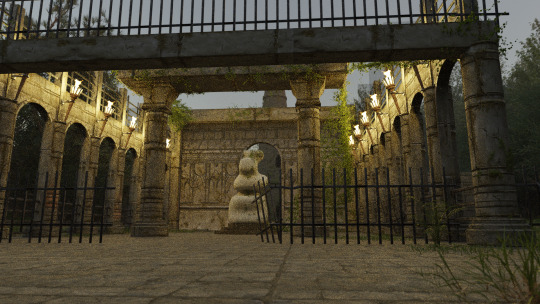
Final Renders: Oh, I think finally I managed to render the scene, and I captured exactly the emotions and details I wanted to obtain.
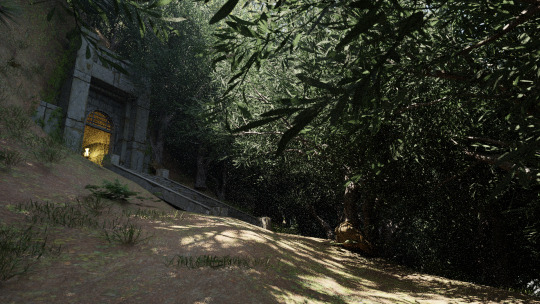
This phase highlighted patience and problem solving in the process when carrying out three dimensional projects. It is an important step and what is most important here is to have a balance between the quality of the rendered image and the associated performance penalty.
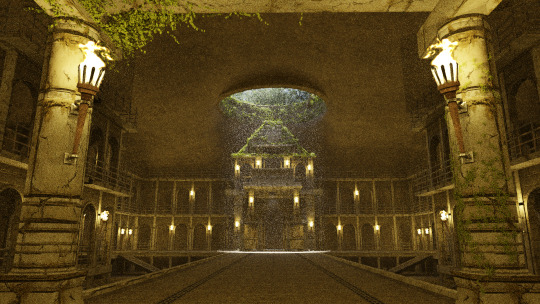
References
Blender Foundation. (2024). Blender 3D Software. [Online]. Available at: https://www.blender.org [ 28 December 2024]
#Developing skills#Development1#3d model#beingmughal#art#blender 3d#artwork#blender render#being#mughal#hamxa#game#game design#hertfordshire#video games#learning games#study blog#design#digital art#Youtube#3d#pureref#environment art#competition#pwnishe#Trim Sheet#modular
0 notes
Text
Blog 3: Environment Design Development 1 – Continuation of Place of Mind
Terrain and Tomb Construction
Following that, I built modular assets, before designing the terrain and tomb themselves, with examples as a source of reference.
Process
Gathering References Using PureRef: While designing the tombs, I gathered the references of the tombs and terrains in PureRef, to maintain consistency and plausibility of the design.
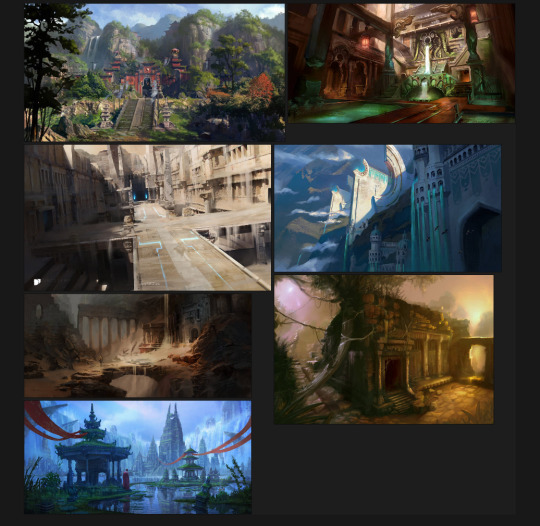
Creating Terrain and Structures in Blender: First, the terrain was built, then, the tomb with the help of models and surrounding constructions and objects. The references informed the orientation and the ornamental design of the architectural designs.
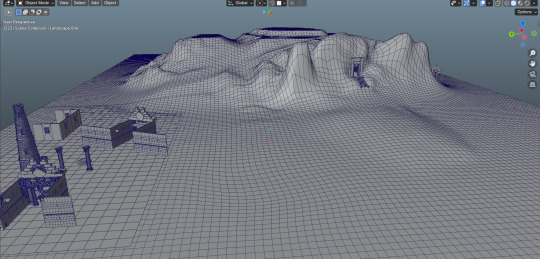
Reflection This stage highlighted the usefulness of referring to the actual and the concocted designs. These references offered light and guidance onto it, and enabled me to establish a neater atmosphere.
References
PureRef. (2023). The Simple Reference Organizer. [Online]. Available at: https://www.pureref.com [ 24 December 2024]
Blender Foundation. (2024. Blender 3D Software. [Online]. Available at: https://www.blender.org [ 24December 2024]
Sketchfab. (2024). Free and Paid 3D Models. [Online]. Available at: https://www.sketchfab.com [ 24 December 2024]
#Developing skills#Development1#3d model#beingmughal#art#blender 3d#artwork#blender render#being#mughal#hamxa#game#game design#hertfordshire#video games#learning games#study blog#design#digital art#Youtube#3d#pureref#environment art#competition#pwnishe#Trim Sheet#modular
0 notes
Text
Blog 2: Modular Magic in Development 1 – Continuation of Place of Mind
Trim Sheets and Asset Creation:
Consequently, for greater efficiency and faster progress throughout the project, trim sheets were produced in unit form in the form of pillars, bricks, stairs, and slabs.
Process
Designing Trim Sheets in Blender: For elements like bricks or stairs I made trim sheets so I was able to build the same structures over and again.
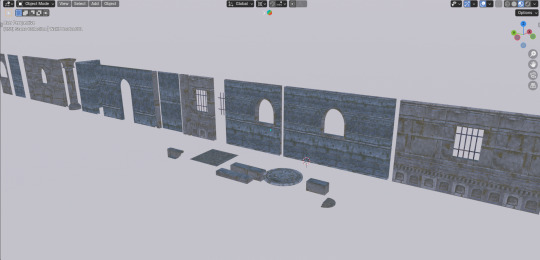
Building the Modular Assets: With these trim sheets, I created more fundamental items particular to the story such as the tomb walls, pillars, as well as other edifices. It did help in saving time and tune the scene up well for the performance aspect.
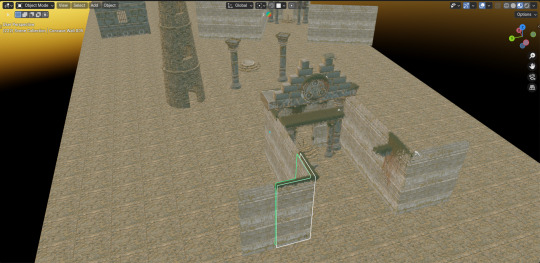
The possibilities of the use of the modular approach are best seen in large environments. It provides measures towards consistency whilst at the same time minimising time and efforts which are used to achieve organisational goal. I also learned that if one wants to be efficient they should always plan on how to do it.
References
Gurney, J. (2009). Imaginative Realism: How to Paint What Doesn’t Exist. Kansas City: Andrews McMeel Publishing. [23 December 2024]
Blender Foundation. (204-). Blender 3D Software. [Online]. Available at: https://www.blender.org[23 December 2024]
#Developing skills#Development1#3d model#beingmughal#art#blender 3d#artwork#blender render#being#mughal#hamxa#game#game design#hertfordshire#video games#learning games#study blog#design#digital art#Youtube#3d#pureref#environment art#competition#pwnishe#Trim Sheet#modular
0 notes
Text
Blog 1: Starting with the Basics Development 1 – Continuation of Place of Mind
Textures and PBR Maps:
That is true with each given plan of the project in the context of 3D work: Each project requires strict and sound foundation. To begin this project, I collected textures, and then optimizing them into the PBR maps to form a realistic environment base.
Process
Gathering Base Textures: For the grounds and wall bases, I procured them from repositories on the internet; with consideration to the right color range and texture standards.
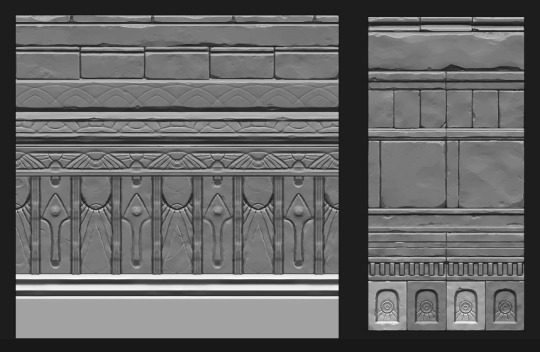
Creating PBR Maps in Substance Sampler: By the help of Adobe Substance Sampler, I created normal maps, ambient occlusion and displacement maps, and adjusted albedo maps for peculiar looks. This enabled me to develop high quality detailed textures.
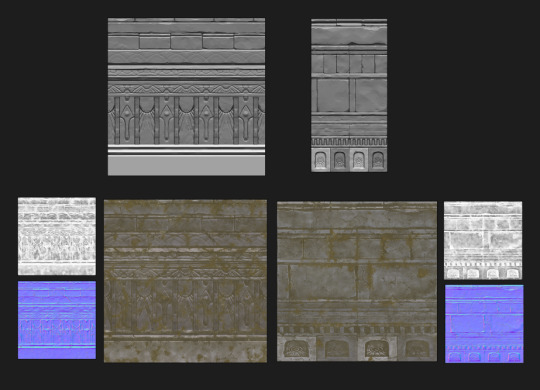
Mastering the initial fundamental ideas connected with the creation of texture PBR maps will allow developers to create realistic 3D spaces. This phase also further showed that a tiny change in a texture formula can drastically change the results.
References
Adobe Substance. (2024). Adobe Substance Sampler. [Online]. Available at: https://www.adobe.com/substance.html [22 December 2024]
Blender Foundation. (2024.). Blender 3D Software. [Online]. Available at: https://www.blender.org [22 December 2024].
Textures.com. (2024). Free Textures for 3D Design. [Online]. Available at: https://www.textures.com [22 December 2024]
#Developing skills#Development1#3d model#beingmughal#art#blender 3d#artwork#blender render#being#mughal#hamxa#game#game design#hertfordshire#video games#learning games#study blog#design#digital art#nsft concept#Youtube#3d#pureref#environment art#competition#pwnishe#Trim Sheet#modular
0 notes